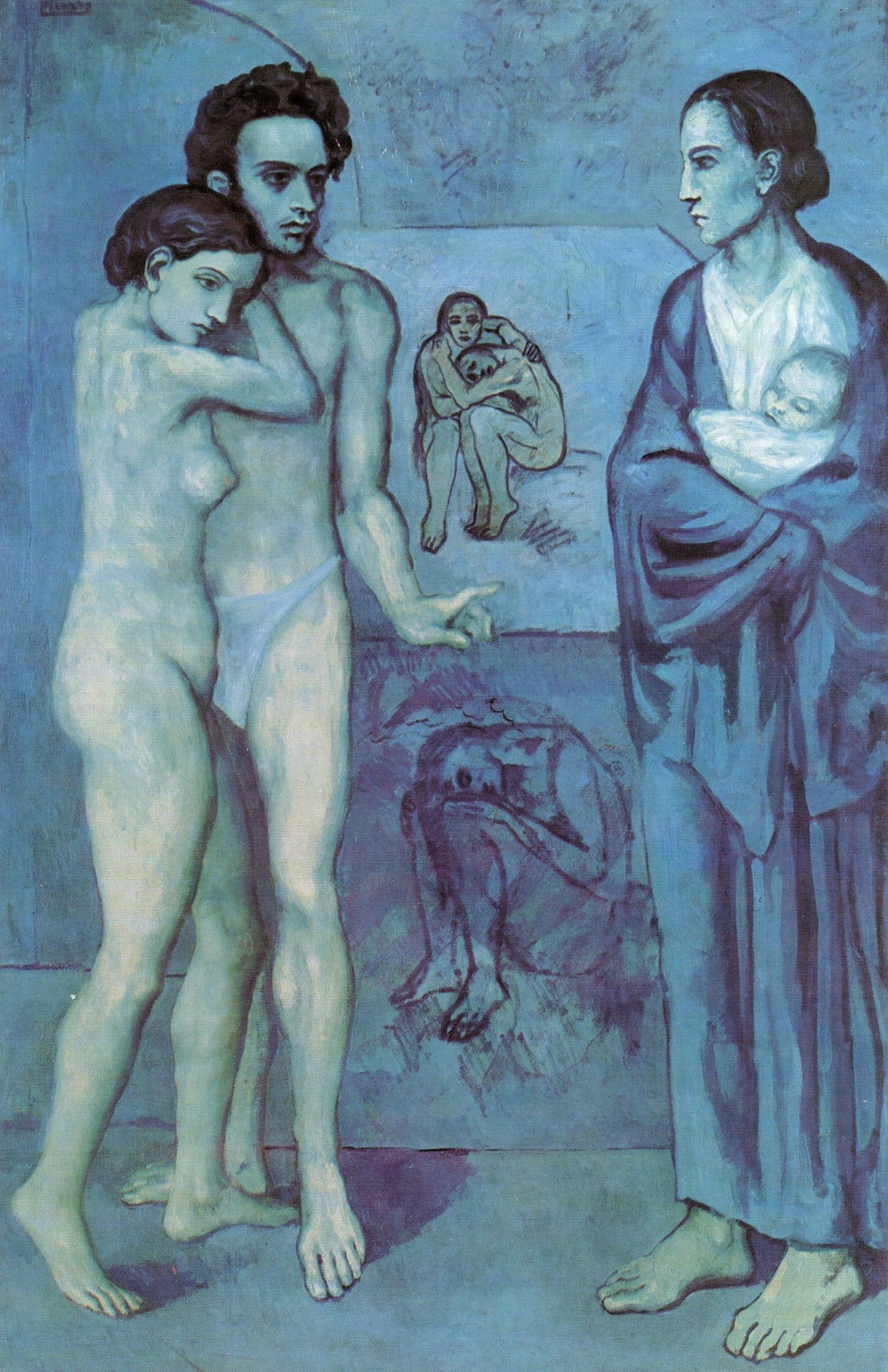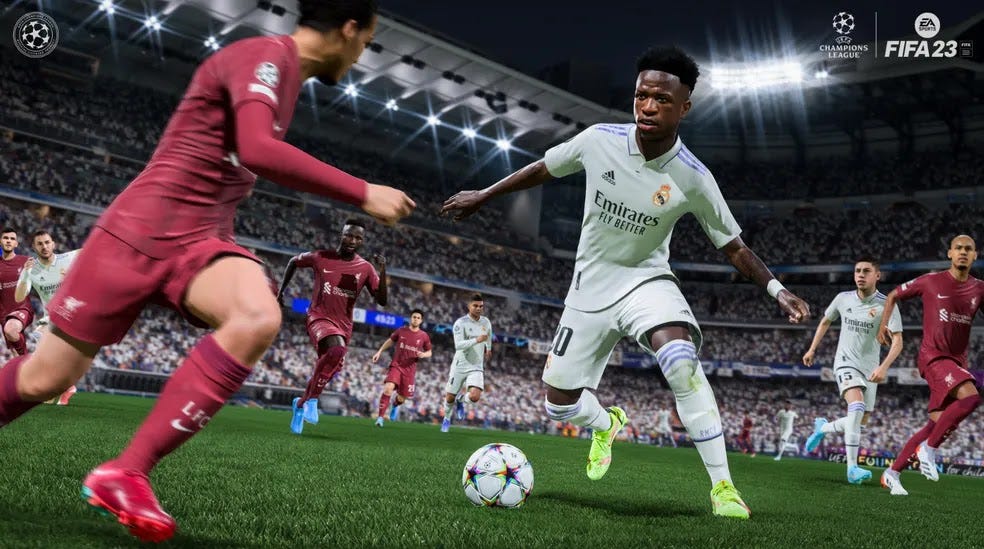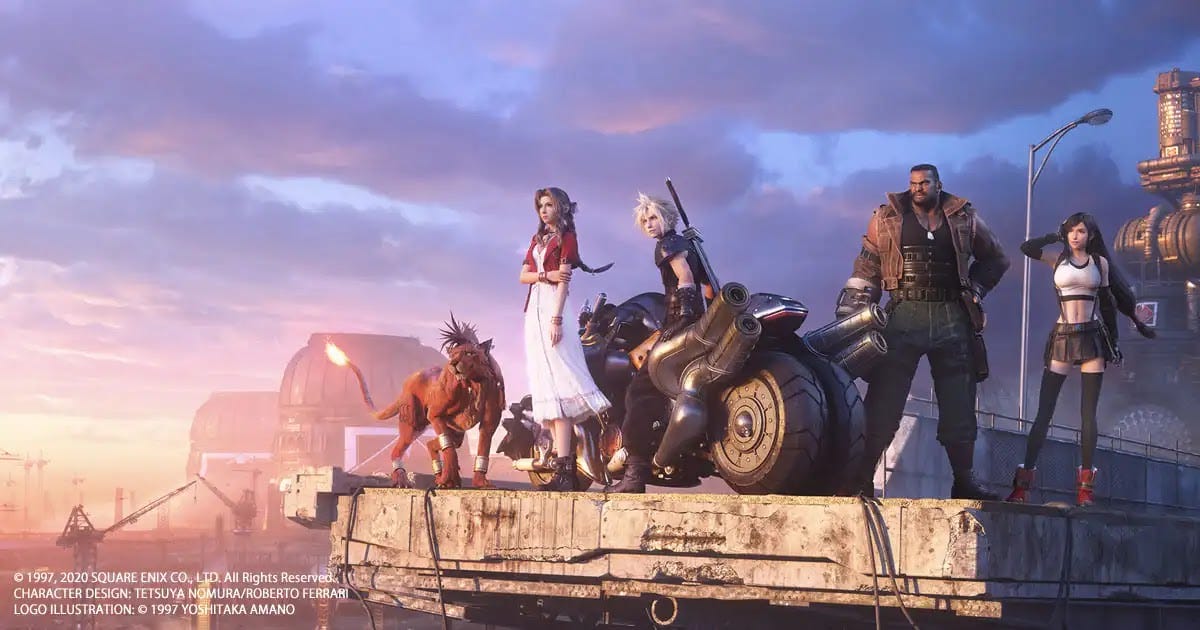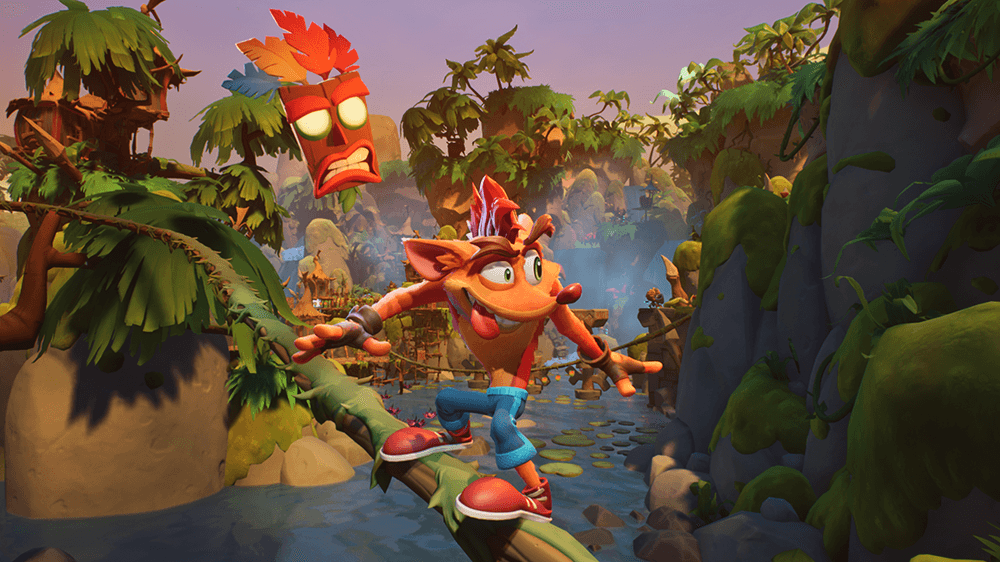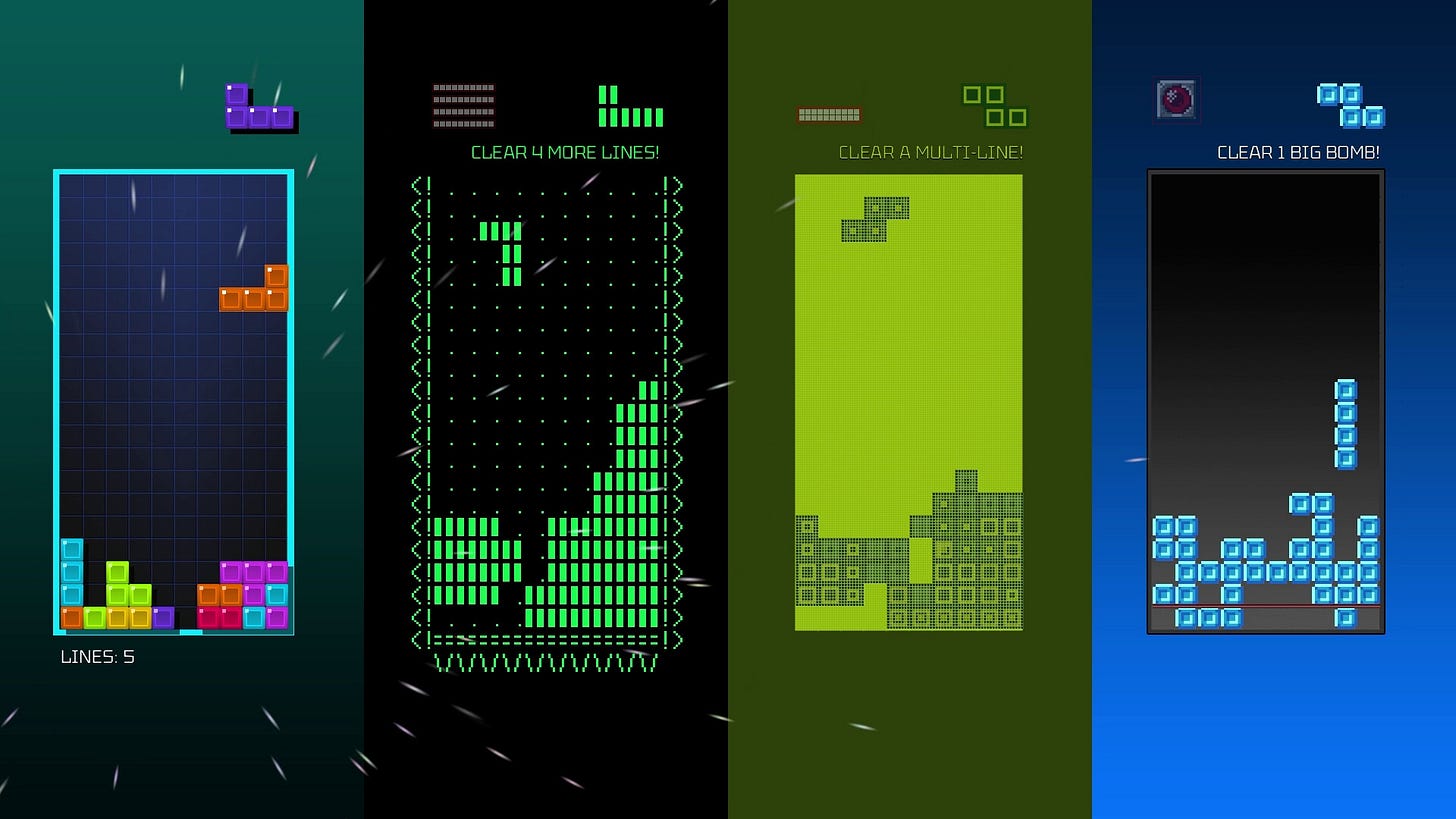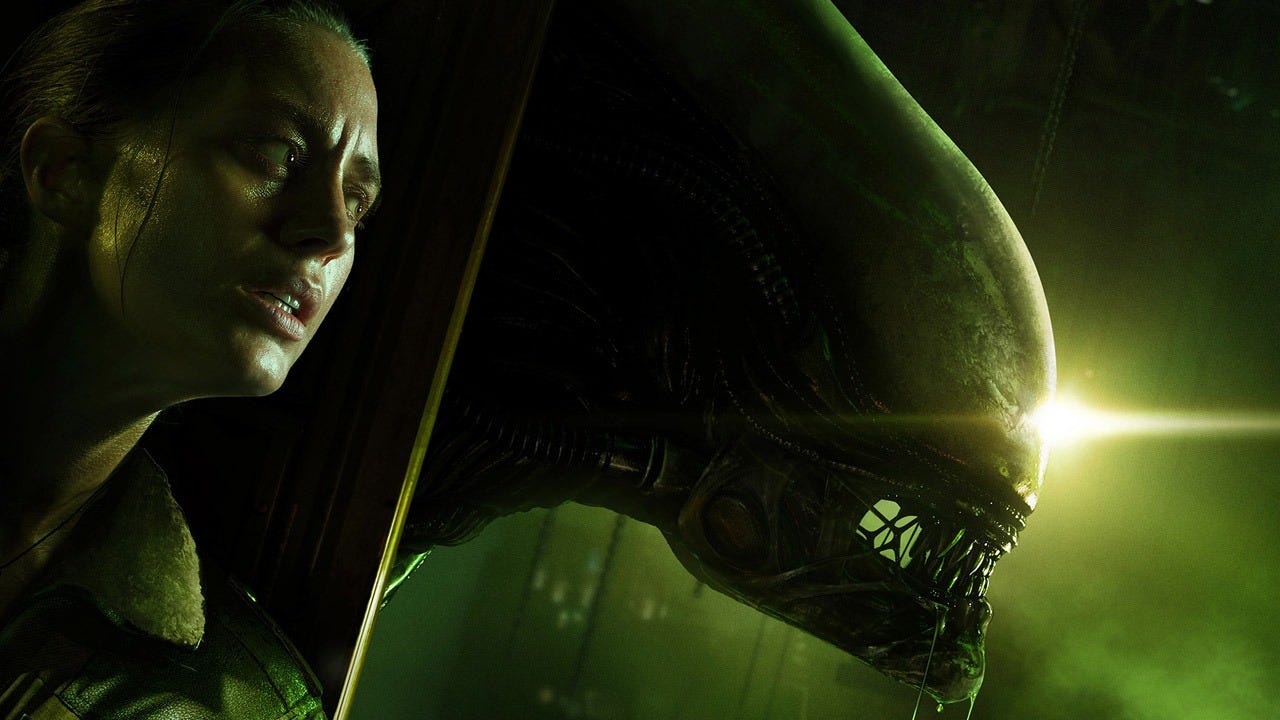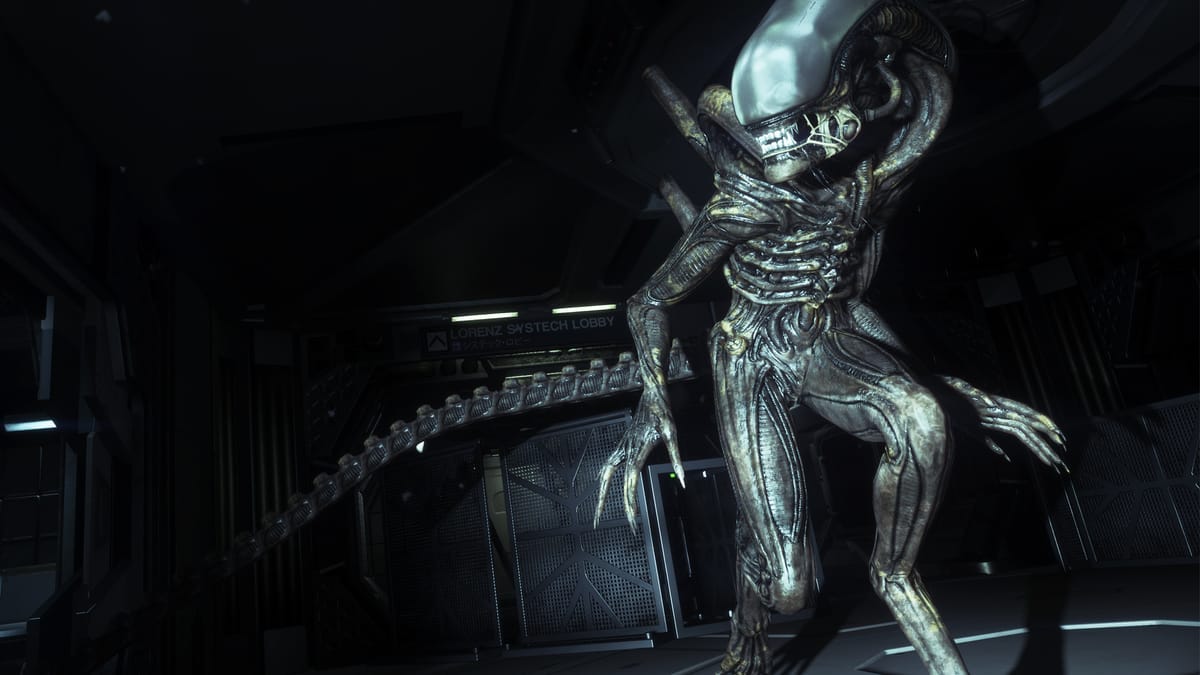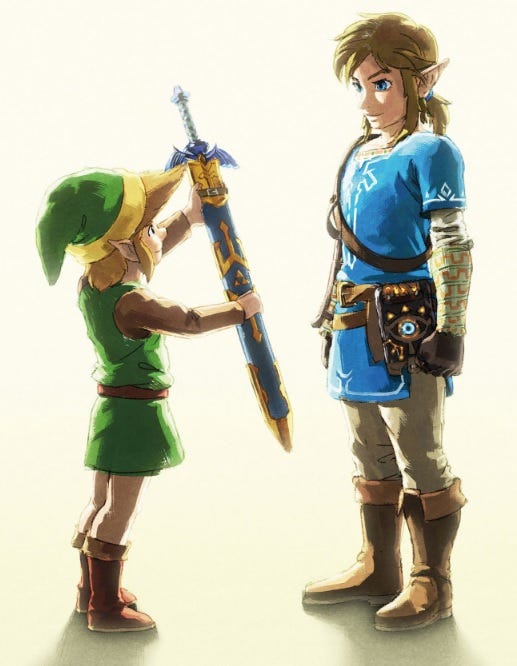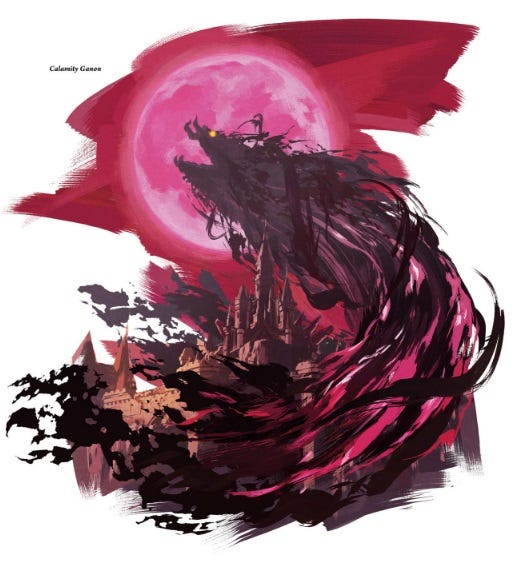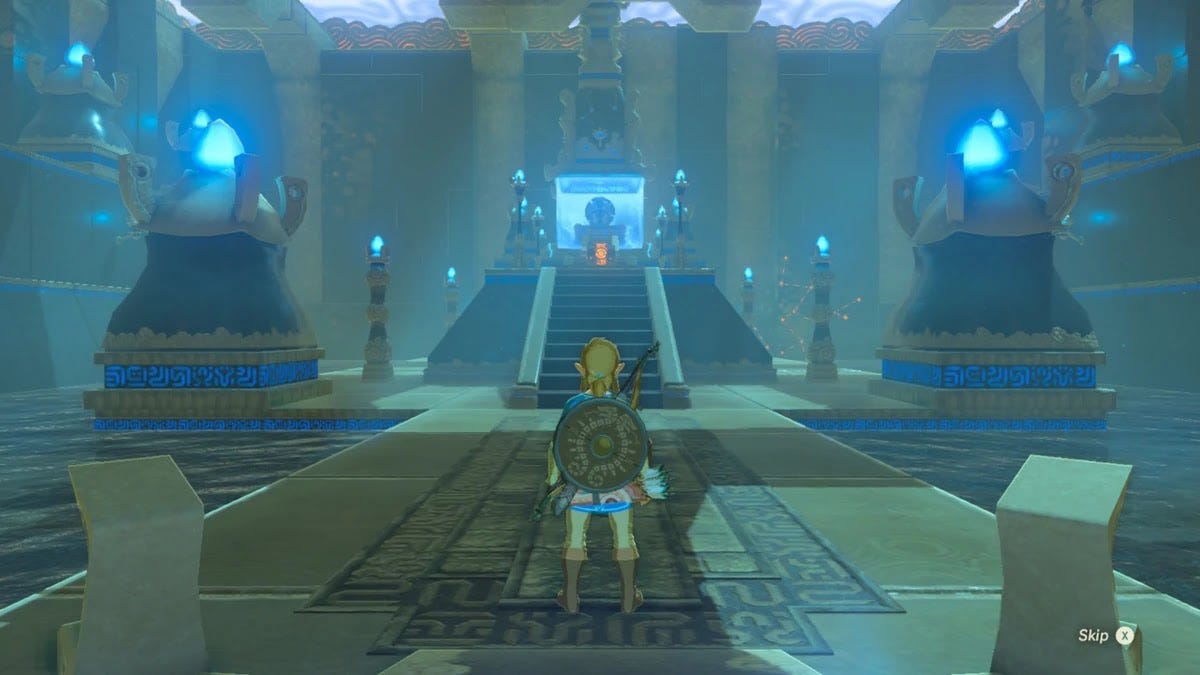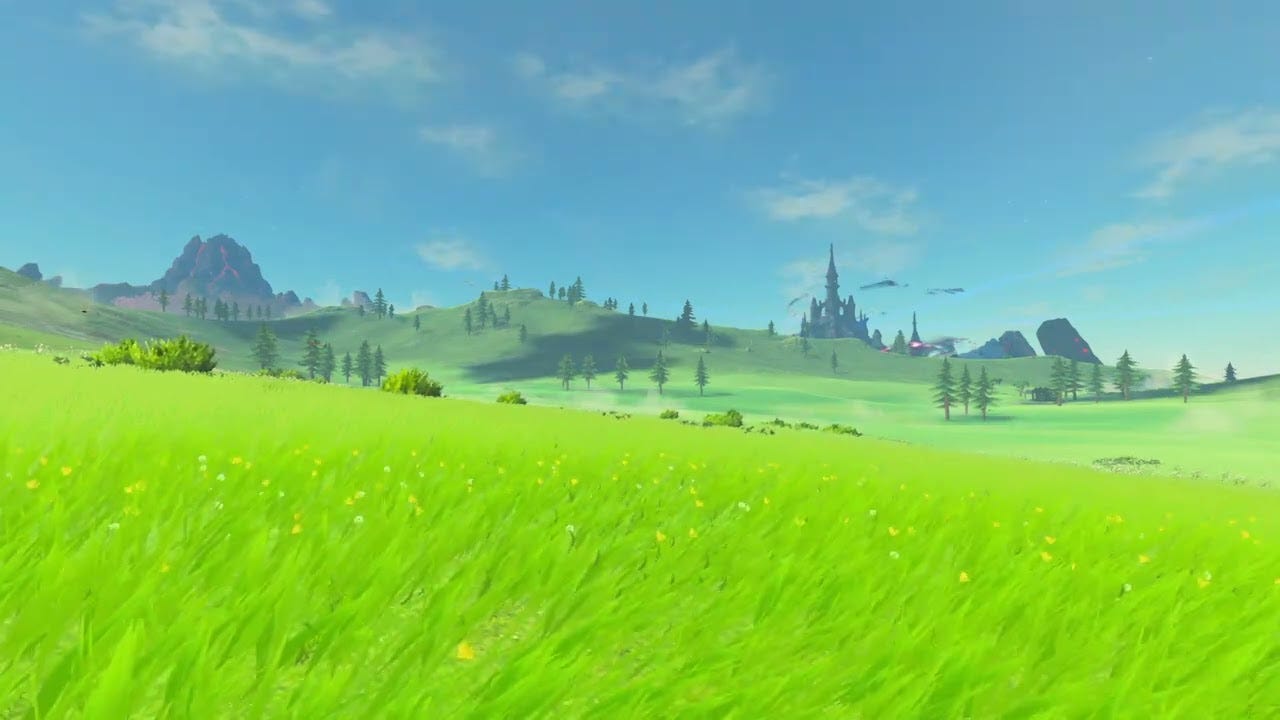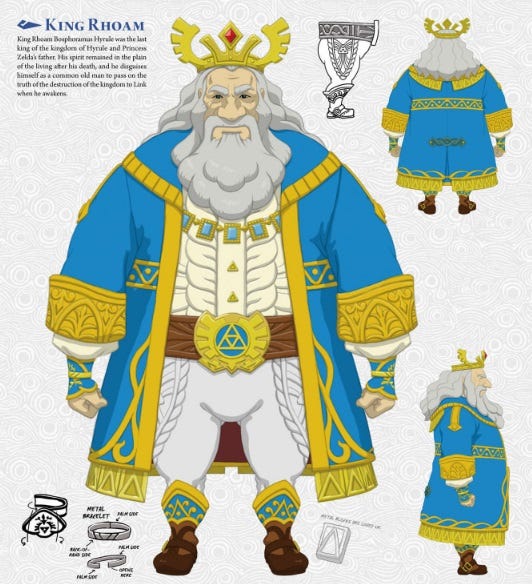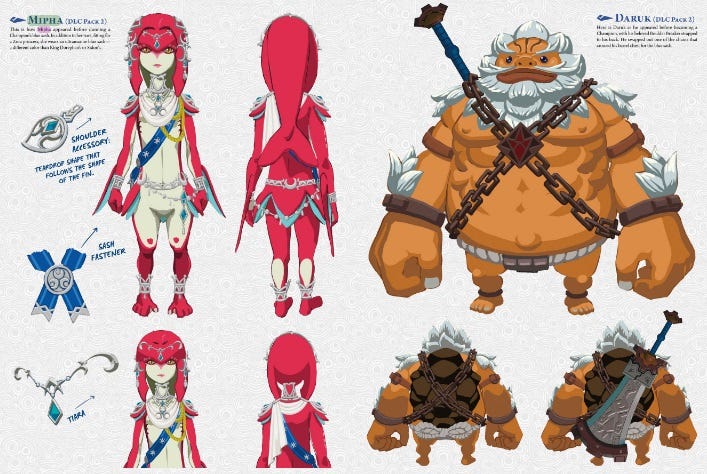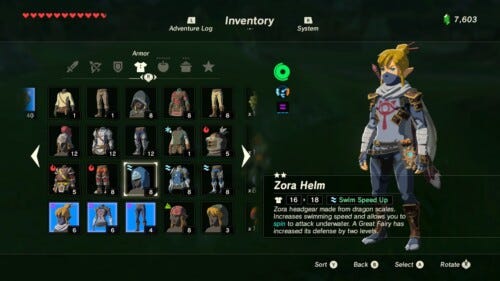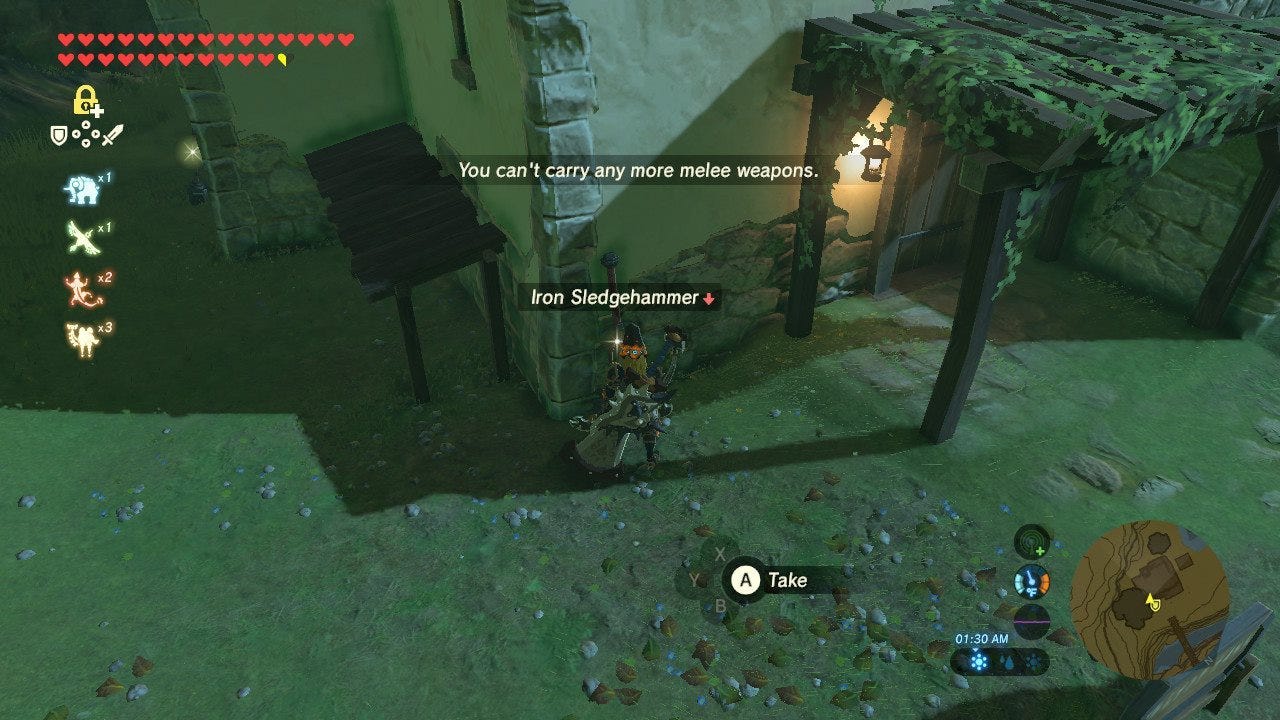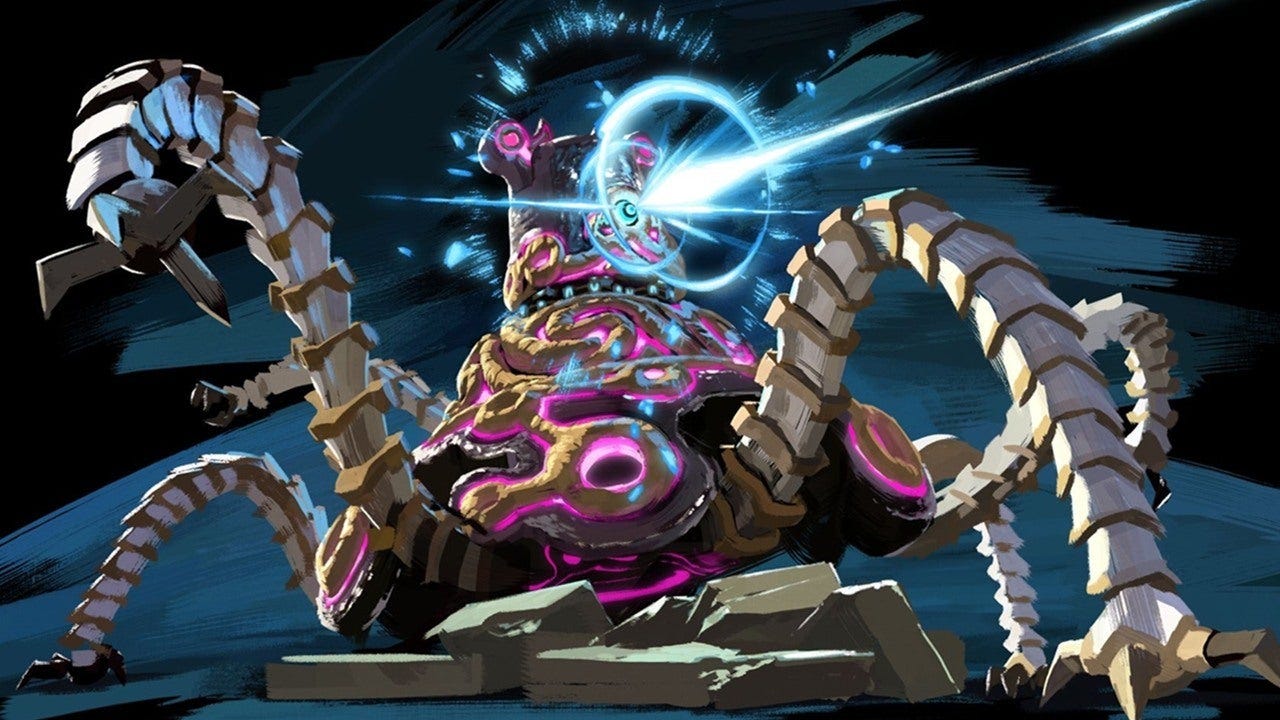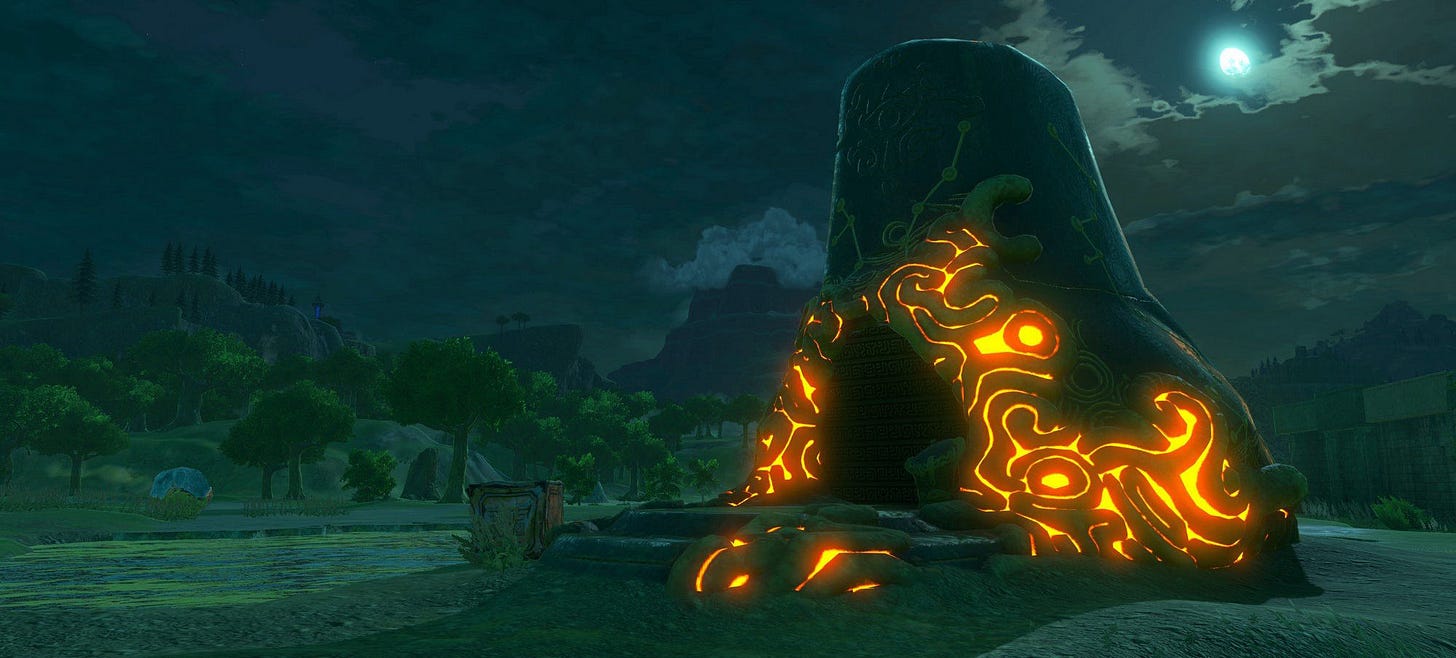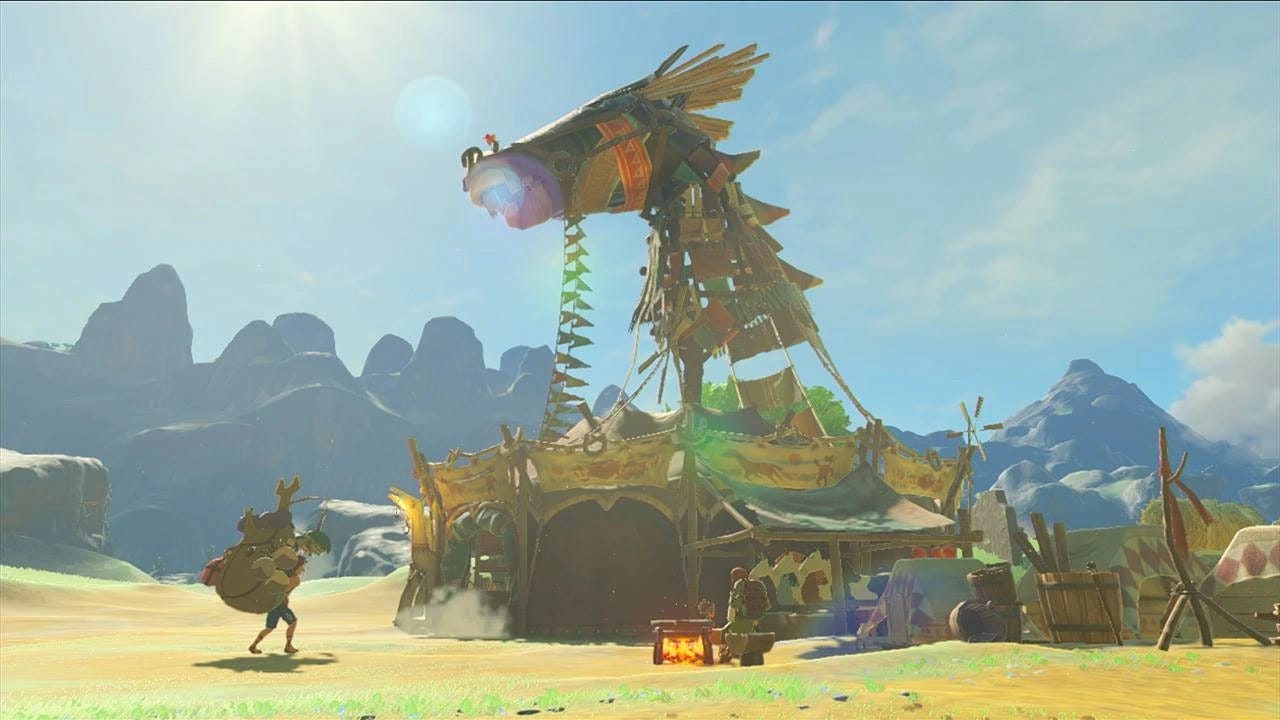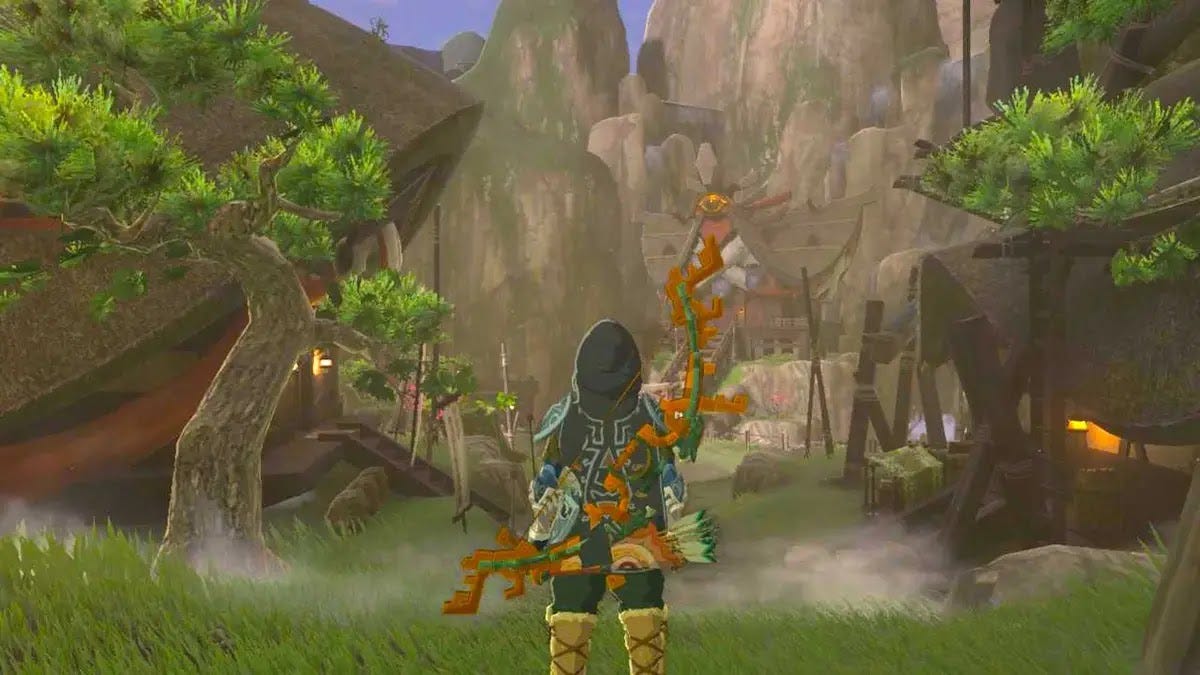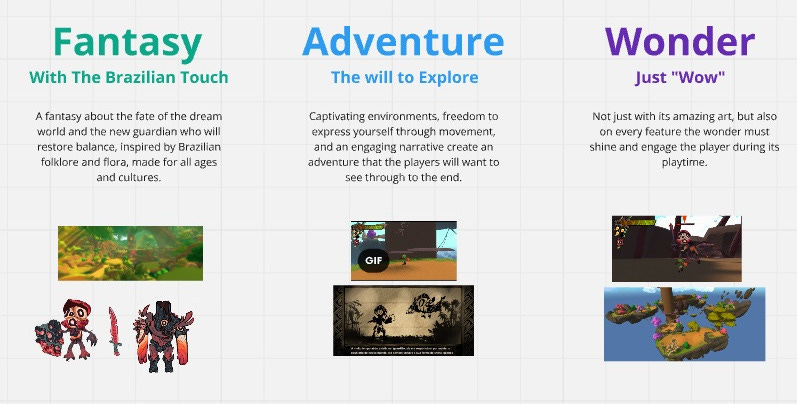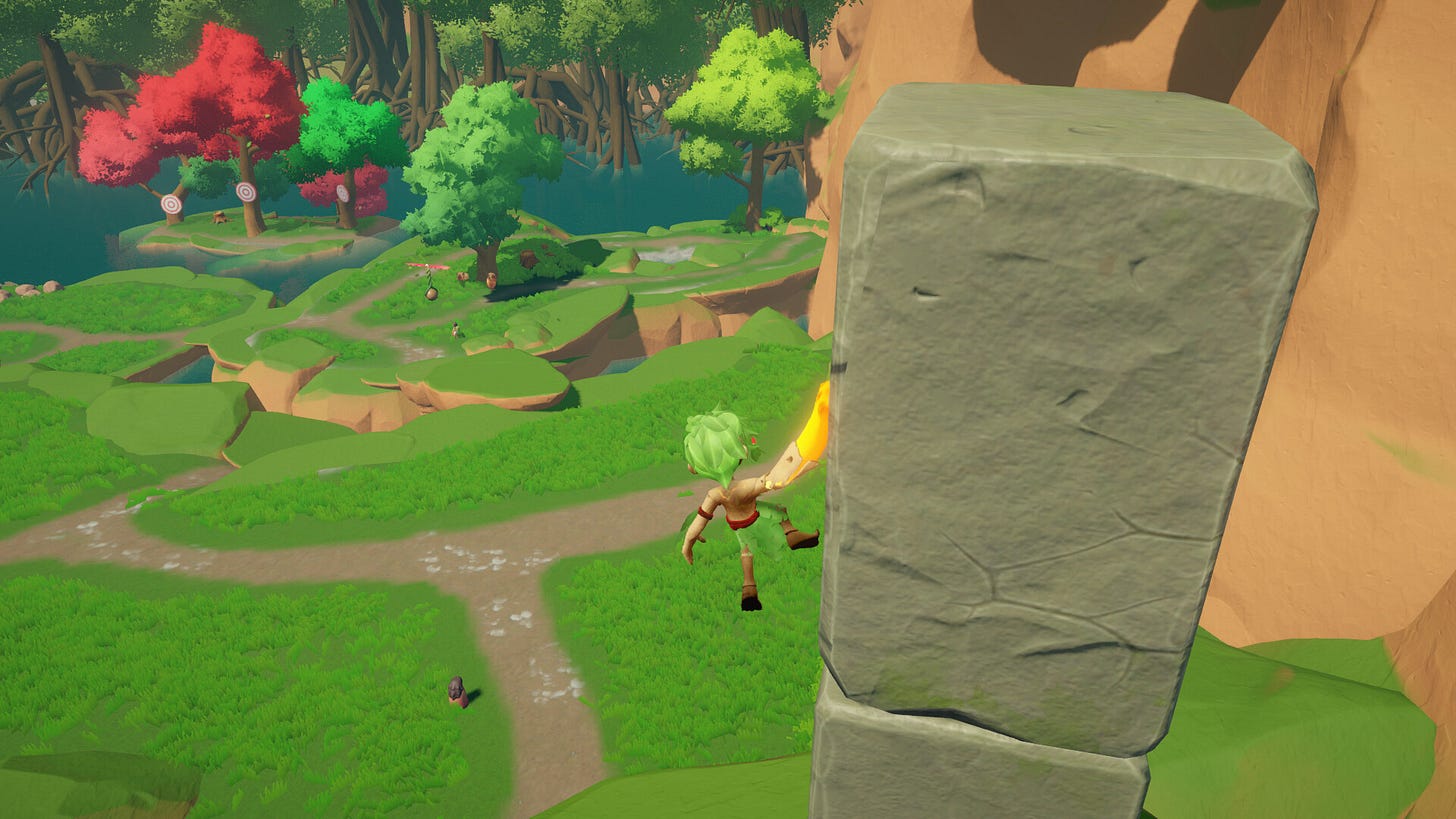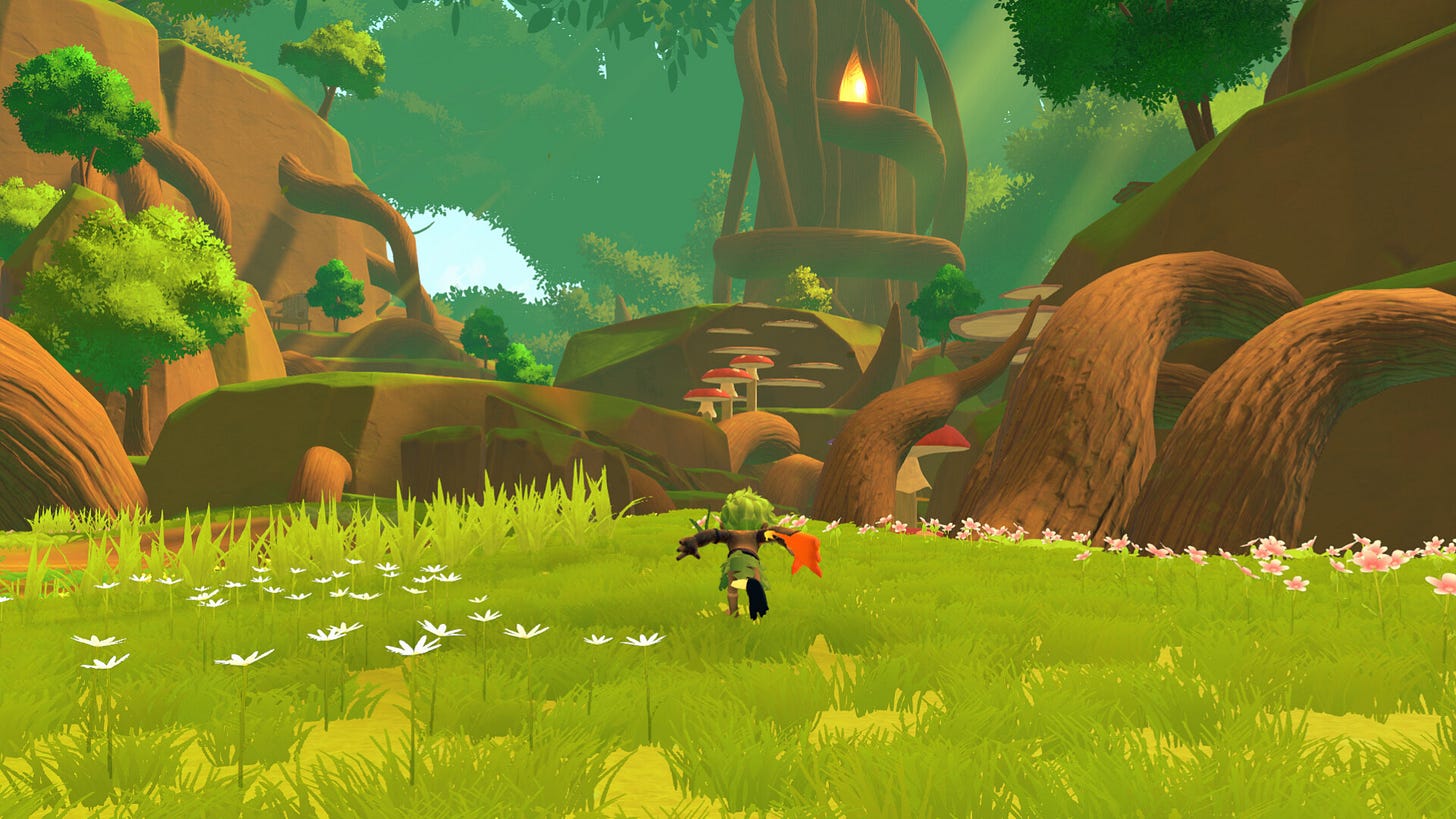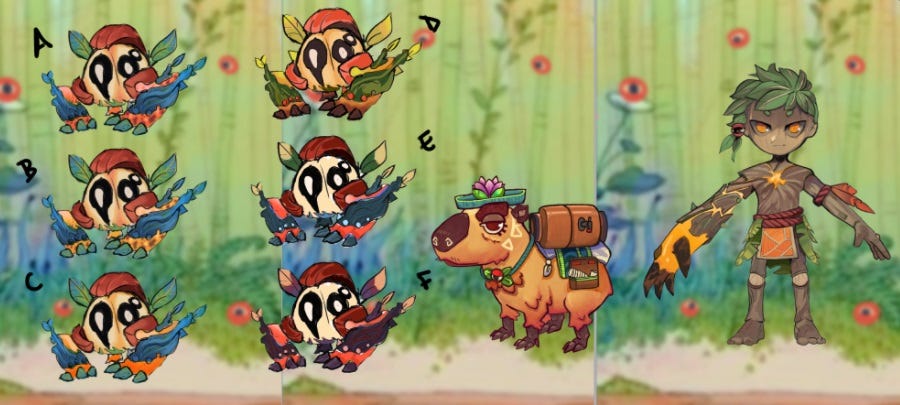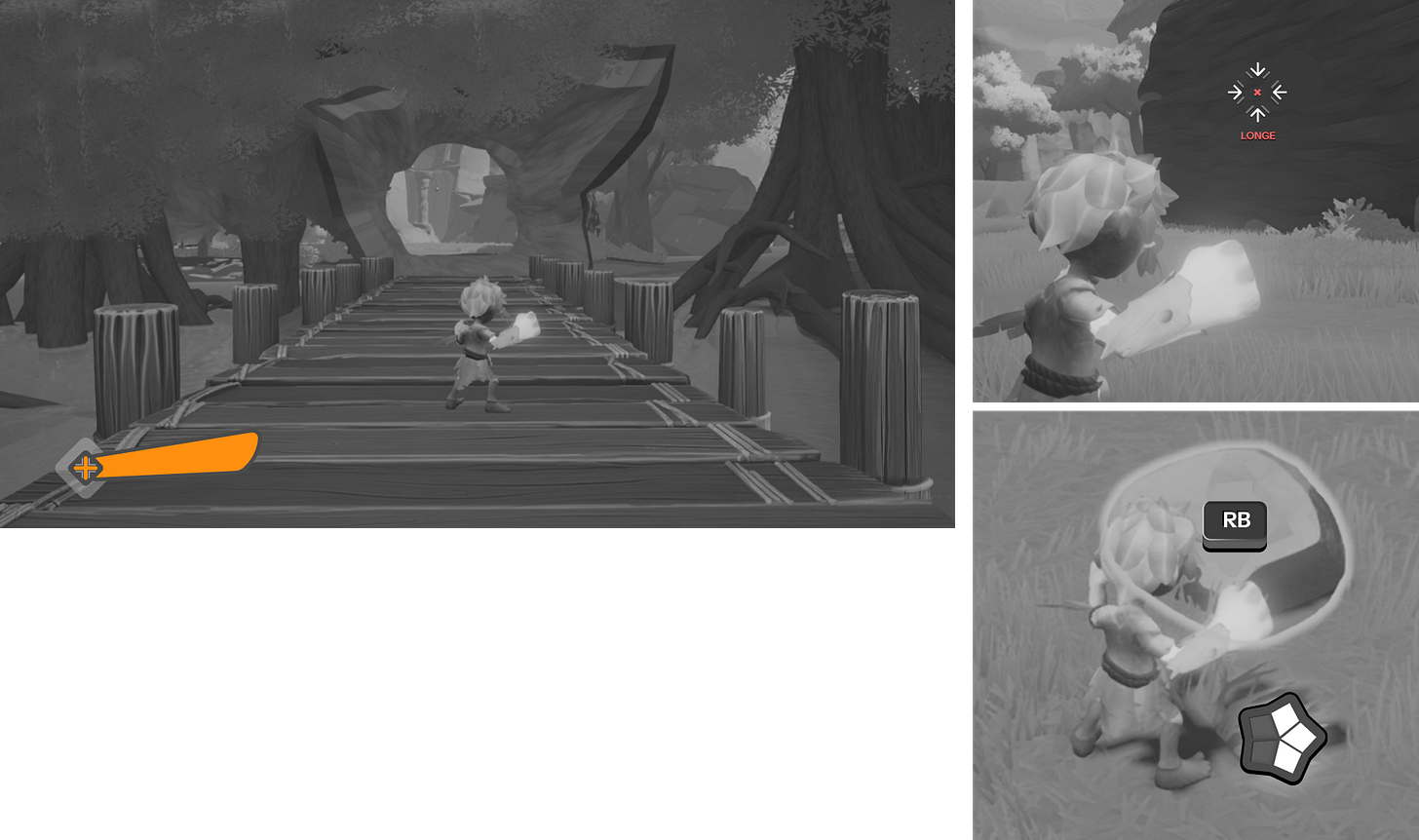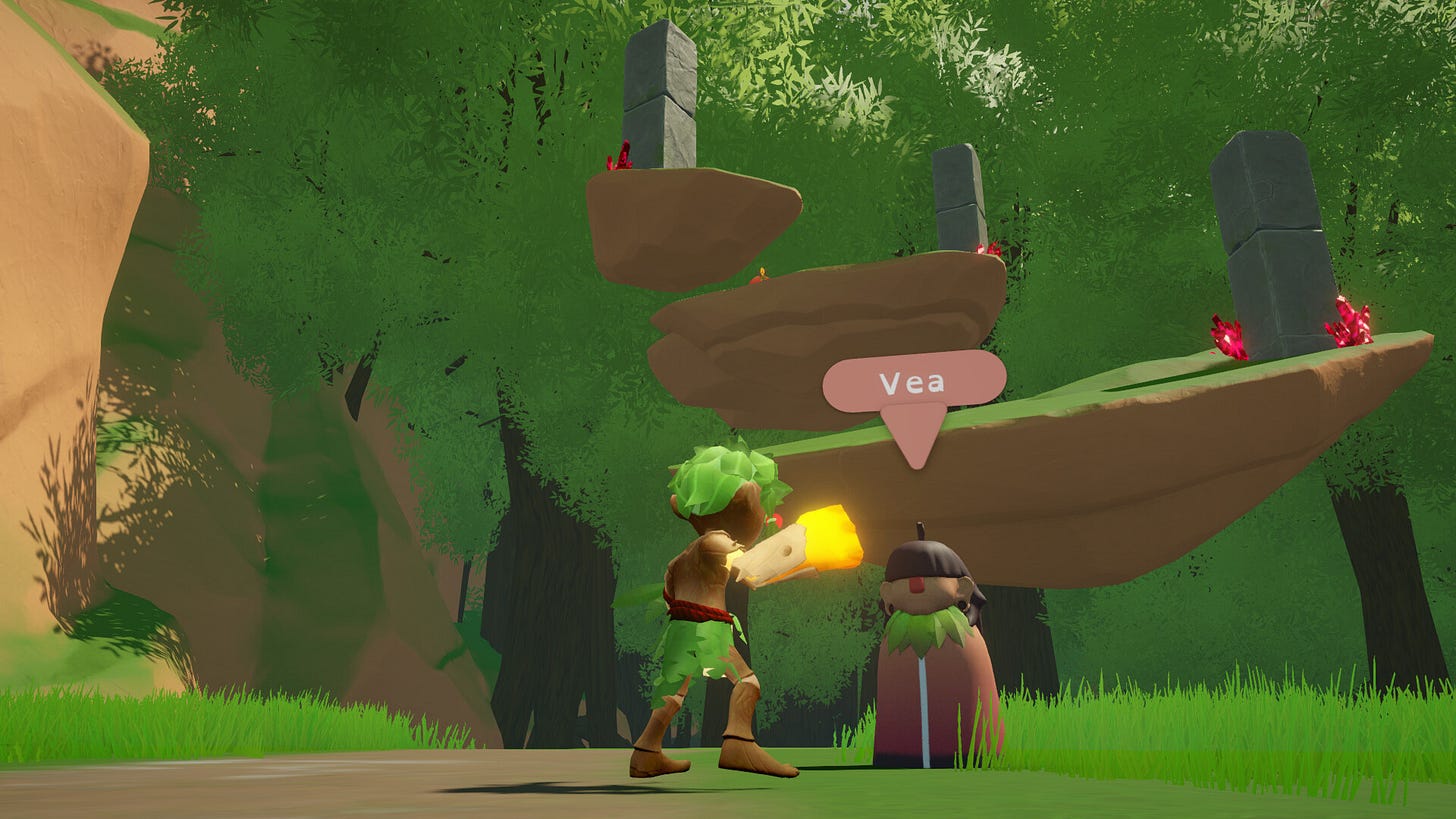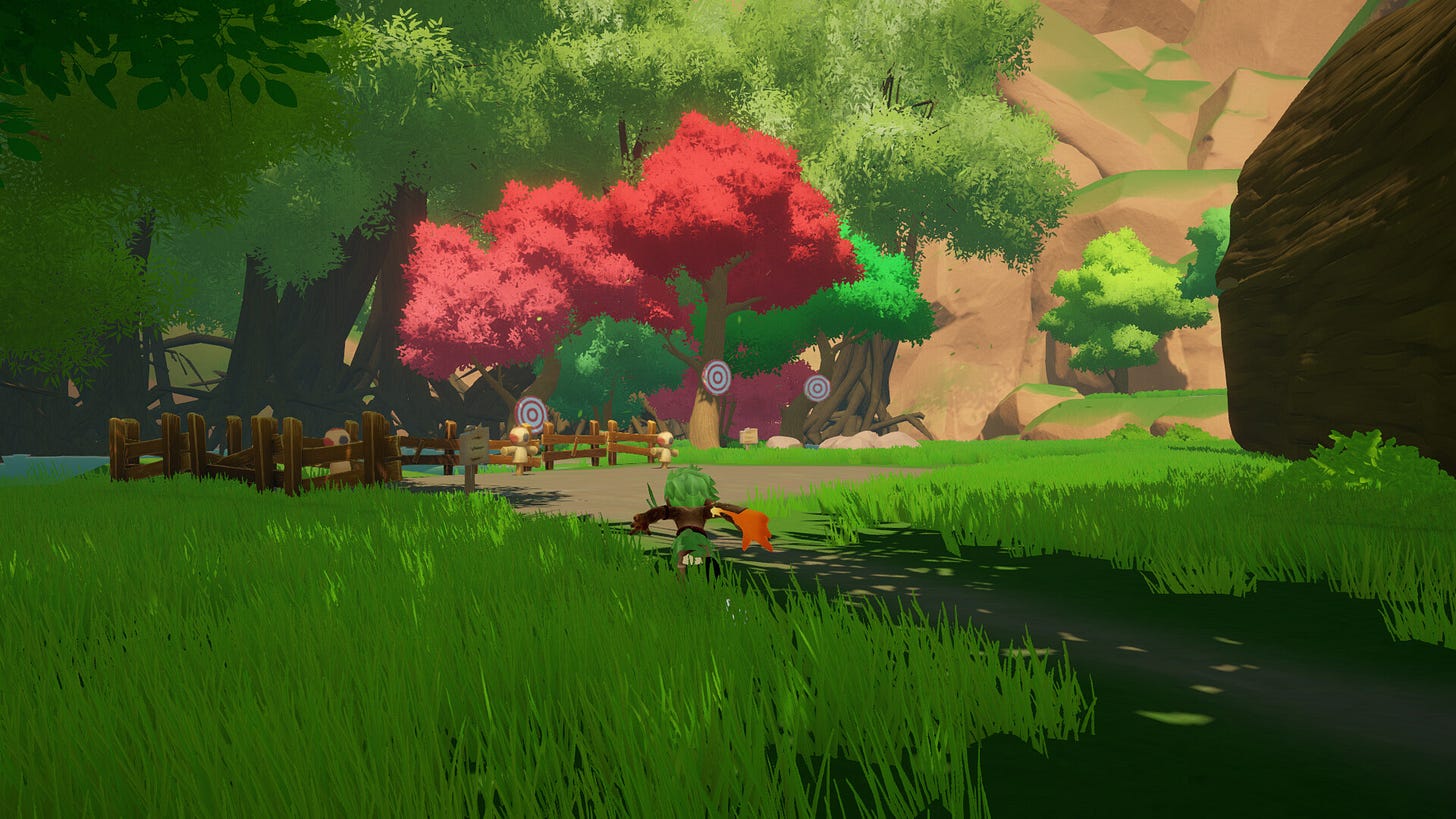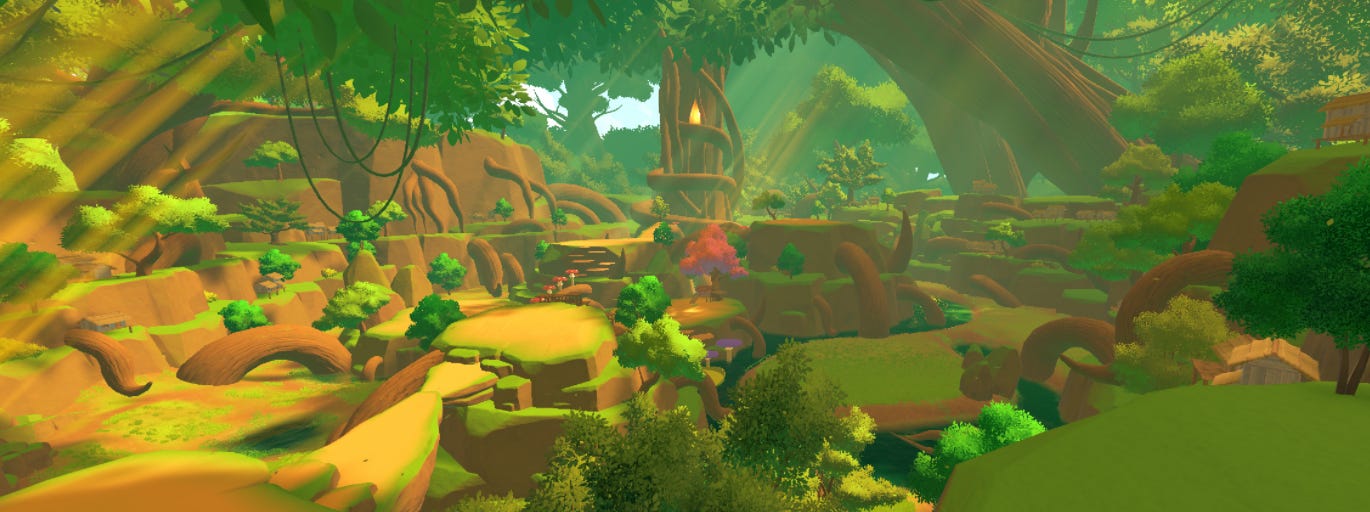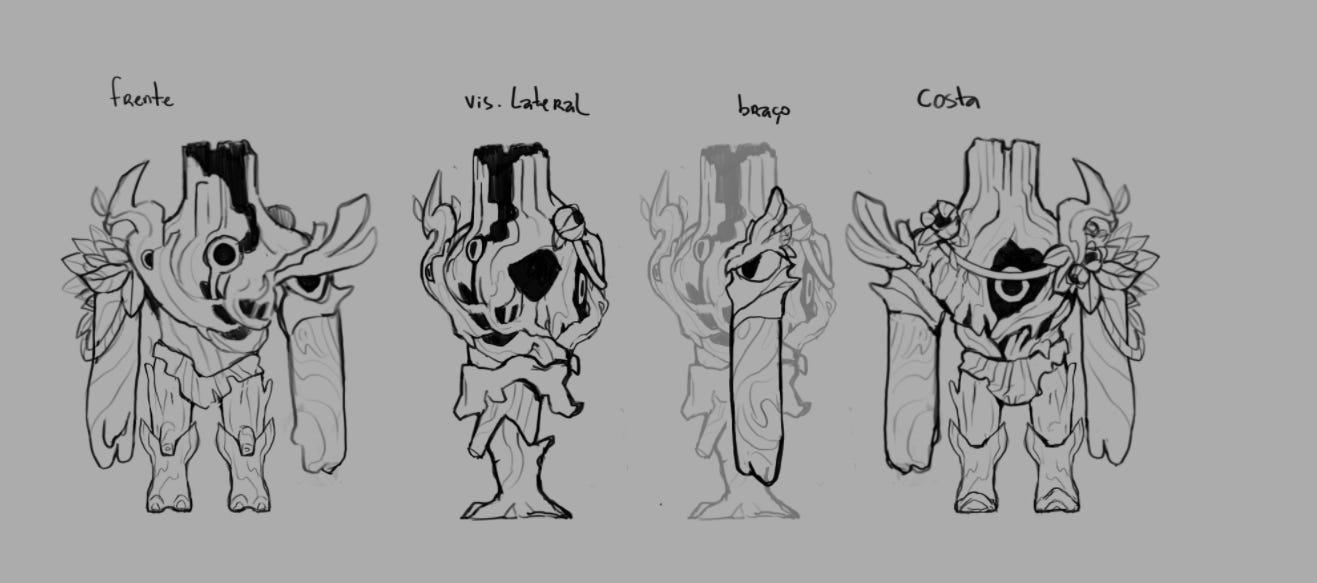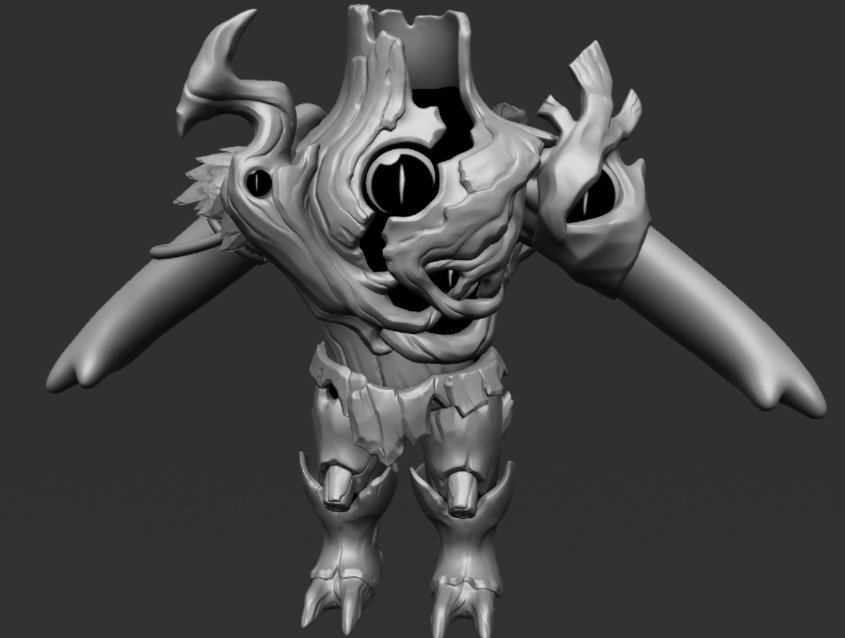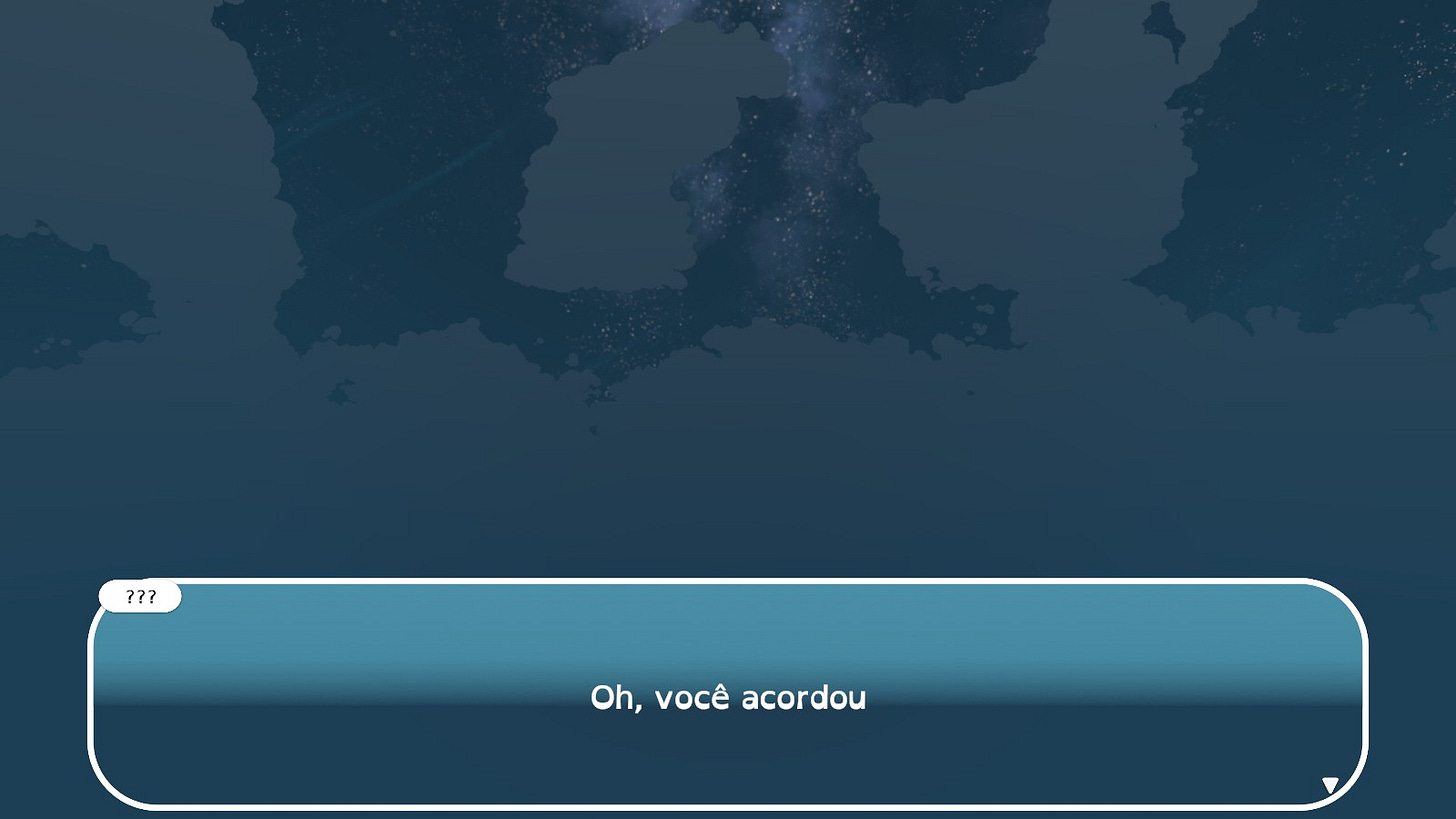How to translate a game’s narrative through the soundtrack
An essay on the significance of music in games
First of all, this text is the result of a lecture I gave at UEMG (Universidade do Estado de Minas Gerais), in Divinópolis.
The target audience for this lecture was psychology students and the intention was to talk about my relationship with art and to apply a dynamic approach with the students in relation to my work.
Therefore, the following text is divided into an introduction, where I talk a little about my history with art, then I begin to elaborate on more theoretical themes (and I also present some things in a more expository way) about my work.
Introduction
As when I was a child around 4 or 5 years old, I remember having an art class where I had my first contact with primary colors, cool and warm colors. This reminded me of a book I had at home, one of those books that are a collection of some magazine sold at newsstands. It was about Pablo Picasso and I remember a part that talked about cool colors and his ‘blue’ phase. I decided to take this book to class and as a result I was highly praised by the teacher at the PTA meeting.
Being praised was something that made me look at art classes (and of course, art in general) in a different way. I understood that it wasn't just about painting, everything there seemed to have some meaning. It turned out that visual arts were my first contact with the practical side, I took some illustration and painting courses, but since it was just a hobby I didn't think about working with it.
When I was older, I started studying music and that was where I had the biggest impact, which led me to choose my current profession. Of course, it was a process, because I started studying violin, then I studied classical guitar for a few years, until I discovered, in college, that what I really liked was composing.
From that point, I decided that I would work with games because of all this contact with audiovisual music that I had in college, where I learned that this could become a job possibility. In addition, when I submitted my final paper, the 0.5 that I needed to get the maximum grade was precisely the lack of justification for the meaning of the choices I made when composing for the game that served as the basis for my final paper.
So I have been collecting materials and studying a lot about these topics, which I will probably spend my life studying and will not know everything, but anyway, I come here to bring in a more summarized form what I have been able to learn since then.
Obs.: I decided to include a painting from Picasso's 'blue' phase, this is one that I remember appearing as an example:
Expression and Experimentation - Audiovisual Aesthetics
The first stage of pre-production of a game starts with the process of analyzing the visual elements. This set of analyzed elements forms a style, an aesthetic.
These types of aesthetics vary into three categories.
Obs.: I decided to use more modern games in this presentation, precisely because the lecture is not for an audience that has such close contact with games, so the decision to use the remake of Final Fantasy VII or FIFA was precisely because of that.
Photorealism
Photographic similarity to reality, subdivided into Televisualism (which adopts an aesthetic characteristic of television events) and Illusionism (use of Photorealism to create fantastic and imaginary scenarios).
For example, in the case of Televisualism, we have FIFA 23.
I'll leave some gameplay for anyone who wants to see how the game's audio works, but in general you can see that the game doesn't have a soundtrack during the match, because just like on TV, there's no music in a football game.
In the case of Illusionism, we have Final Fantasy VII Remake:
Here is the gameplay of the game:
And here's the track that played:
Obs.: One comment I made in the presentation when comparing the soundtrack of a remake and the original version was that it was possible to create a parenthesis in relation to the evolution of technologies, because what was a limitation on the Playstation 1, today becomes a musical aesthetic. In the case of Final Fantasy VII, the themes are maintained, but the instruments used, in general, are realistic and recorded with an orchestra.
Caricaturism
Caricatured character descriptions, consist of being simple and non-photorealistic.
For example, in this case we have Crash Bandicoot 4:
And here's a part of gameplay from the game:
The track that played in the presented stage:
So unlike Illusionism, Caricaturism can present a much smaller spectrum of emotions, sometimes related to something more upbeat, more cheerful, comical, it depends a lot of the game.
Obs.: Another comment I made was in the case of Crash, we still have some clichés that refer to music that is normally related to the island stereotype, which is a stereotypical view, but without much relation to traditional Hawaiian music.
Abstractionism
It is characterized by pure forms. Abstractionism is rarely found alone, often having more caricatured forms than purely abstract ones.
For example, the game Tetris Forever:
And here's a part of gameplay from the game:
As it is a game that consists of some ports of older versions, I will leave the game's theme song that is featured in one of its first versions:
In the case of Tetris, we have a soundtrack that is characterized as a product and limitation of the time (in terms of instrumentation).
Obs.: I said during the presentation that the Tetris soundtrack features elements of Russian folk music, as it is a game that originated in that country, something that is not necessarily related to Abstractionism.
Other elements that can be observed
It is possible to observe other elements that can help in the production of a game's audio, such as:
Dimension: 2D, 3D or isometric;
Point of Perception: first person, second person or third person;
Visual Perspective: elements based on pre-existing things or come from an imaginary world;
Audiovisual Motifs: mechanics or elements that are derived from other media;
Soundscape: diegetic sound and non-diegetic sound;
Senso-Motorism: audiovisual elements that connect the player to the game creating immersion;
As a composer, I don't usually have to worry too much about these elements. I usually see them as more directed at those who work with sound design, but it's still important to have an idea about them.
This way, we can have a more macro view of the project, building a visual direction. In the next topics we will analyze the internal elements of a game's narrative in more depth.
Expression and Experimentation - Semiotic
After having a vision of the general aesthetic, another element that helps us write the soundtrack is the analysis of certain patterns of characters, places, among other narrative elements.
Semiosis is directly related to our ability to perceive patterns, creating meaning for things based on our experiences.
I will give you an example to help you understand. When we play a horror game and there is a scene where the monster appears, we know who the monster is.
In this case, I imagine you can point out to me who the alien is. What elements are part of the characterization of this character?
The xenomorph has a physical structure that is strange to the common human, it lacks eyes, elements of other animals (such as a tail, exoskeleton), and it also has a more irrational, aggressive and wild posture.
In addition, there are musical elements that can help to better understand these characteristics and that reinforce this discourse that the artistic direction and the script present.
Expression and Experimentation - Topics and Tropes
When these characteristics that we perceive are repeated and become patterns in music, these characteristics are called musical topics.
So what characterizes an alien music? I want to give the game Alien: Isolation as an example. I want to show you this scene first:
And in this case, one of the combat tracks:
It has electronic instruments with unusual timbres and compositional elements that create tension, such as dissonance and the use of noise.
In addition to being an alien figure, the xenomorph also presents elements of a monstrous figure, since throughout the game it does not present any friendly posture, you must constantly flee or (try to) fight with the alien. The combination of these two topics forms a trope.
This mixture of these elements is reflected in the soundtrack, for example, electronic instruments are associated with the alien topic and the elements of tension, noise, etc., are associated with the monster topic.
We can observe how the same trope can contain different topics just through the process of visual and narrative analysis, which is reflected in its soundtrack.
Applied Theory - The Legend of Zelda: Breath of the Wild
After developing these concepts, it is possible to carry out the entire pre-production process of a game's audio.
Before applying this to a work I have done, I would like to show a concrete example, where we will analyze the aesthetics and through semiotics, define some topics and tropes.
The example I want to present in this application of the theory is the game The Legend of Zelda: Breath of the Wild.
The initial idea of the game is to redefine the narrative patterns that were common in previous games. I wanted to bring a quote from one of the illustrators to elaborate a little on this:
This is reflected in the game's artistic direction, in the characterization of the protagonist and other characters. For example, Ganondorf, the game's main antagonist, loses his physical form and is characterized as an 'evil force', a 'calamity'.
So before I start talking about the soundtrack, I'll let you watch the game's introduction and think about how this initial music reflects what is shown to you.
I want to ask you some questions, a very brief dynamic of the directing process.
What elements are present in the environment?
It can then be observed that there are elements of a technology from a society that no longer exists in the shrines, providing a contrast with the more ‘natural’ elements that are presented.
What does the game's objects and characters look like?
The characters have a caricatured anatomy, but not too exaggerated. In addition, they are characteristic of an imaginary world, since not all the characters are human figures.
What does the game's interface and texts look like?
The analysis of texts and UI are normally questions that are directed to the sound designer, normally the composer is not so concerned with these elements.
Conclusion of questions
After observing these elements we can come to the question that concludes this topic, that is ‘what is the audiovisual aesthetic of this game?’ These questions help you make decisions to create an audiovisual appearance for your game.
Zelda then has an aesthetic that surrounds Illusionism and Caricaturism, thus allowing for a much more developed emotional spectrum.
Applied Theory - Topics and Tropes
After the analysis process, it is possible to observe two topics: ‘mechanic’ and ‘nature’. The game brings two key elements as the main conflict, as technology is a potentially dangerous tool that can be corrupted, but its ethical use can benefit humanity.
‘Mechanic’ topic
Tracks associated with mechanical elements tend to be more complex and tense, with more rhythmic elements, more ‘mechanical’ sounds (such as sound effects included) or more synthetic instrument timbres, few melodic elements and the use of elements that tend to repeat throughout the song.
Some of the musics are directly associated with the guardians, that is, related to combat, so the track creates this tension because it is about an enemy.
Here is an example of combat with him:
And here is the isolated track that plays when combat starts:
‘Mechanic’ topic is also associated with the shrines that are scattered throughout the game. Synthesized elements are used in the music, creating a feeling of something otherworldly, that is a contrast with nature.
The track that plays when you are in a shrine:
Obs.: I talked a little about the game's lore, which is that all of these elements are associated with a lost civilization, that is, the regression in relation to technology subtly conveys a warning message about the dangers of technology.
The rebirth of the use of technology is in order to combat a greater evil, but they have been corrupted by the antagonist himself, that is, technology is not the problem, but rather its misuse and corruption that must be avoided.
‘Nature’ topic
The ‘nature’ topic is associated with the game's characters and the places they are located, using traditional instruments, being a little simpler and clearer, with few elements of tension.
The equivalent of shrines in terms of nature are stables. These are structures clearly built by humans, using natural elements such as logs and wooden planks.
Kakariko Village is a recurring location in the series. In addition to using non-electronic instruments, it uses elements of traditional Japanese music.
Here is the theme of Kakariko Village:
For those who are curious and want to compare it with versions from other games, here is the music from Kakariko Village from The Legend of Zelda: Ocarina of Time:
Obs.: Once again, citing the game's story, talking about the Sheika people, who were responsible for creating the technology, the same technology that was banned by the Yiga clan, who wanted to use the technology to overthrow the king of Hyrule. Thus, the Sheika people, who were not associated with this clan, founded the village of Kakariko.
So there is this contrast when there is reference to these remaining people, the monks who stay in the shrines for example, justifying less fragmented melodies in the tracks of these places, creating a sense of 'humanization' for them, but still in the aesthetics that this whole topic carries, especially in the instrumentation.
Other topics and tropes
Now I want to talk about some topics that combine the two previously presented.
One of them is the music of Hateno Ancient Tech Lab, which has elements of acoustic and electronic music:
This track represents two characters, who like Link, are a bridge between the past and the present.
In the Hyrule Castle song, the two themes represent a place that was once safe (a ‘nature’ topic), but has now been corrupted (a ‘mechanic’ topic).
Their combination represents the confluence of an ancient evil and vivid memories of a place of peace.
From this, we can get an overview of the game, analyzing the aesthetics as a whole and observing recurring elements that build the narrative, allowing the interpretation of these elements through the music.
Materials and Methods - Guardião Tupã
Now I would like to apply all this theory that I presented to you to a work that I am still working on, but that is at a stage where most of the decisions regarding the audiovisual aesthetics are well defined.
Guardião Tupã is a fantasy adventure in a world where creatures from Brazilian folklore are being threatened by the feared Corpo-Seco, who seeks to break the balance of nature and invade other worlds. In this journey, you take control of a newly-created being using part of the energies of an ancient guardian, in search of recovering his strength and restoring the balance between the entities, learning more about this universe and immersing himself in Brazilian culture in the process.
The game is based on three pillars: fantasy, adventure and wonder. From this it is possible to understand the direction and implications of this in the soundtrack.
Just like I did with Zelda, I want to show you a little bit of the game before talking about the soundtrack:
I want to bring up, again, those three questions that will help us define the game's audiovisual aesthetics.
What elements are present in the environment?
We can observe the predominance of nature. The contrast comes from the character's relationship with the scenery with a much greater proportion.
What does the game's objects and characters look like?
The characters are more caricatured with members exaggerated (or disproportionate). They have enemies from an imaginary world that does not belong to reality.
What does the game's interface and texts look like?
As I said before, these elements are not so important in the design of the soundtrack, but rather for those who will create the sound effects.
Conclusion of questions
In conclusion, basically what we have here is a game, like Zelda, that is between Caricaturism and Illusionism. However, Guardian Tupã is much closer to caricature in relation to the other game.
Materials and Methods - Topics and Tropes
‘Nature’ Topic
Initially, two main themes are developed, one of elements of nature just like in Zelda, in a slightly more pastoral and regional sense, but as it is a more caricatured game, the music has a more upbeat and less minimalist character.
Here is one of the tracks that represents this topic well:
I work on this music only with orchestral and non-electronic elements, in addition to working with more upbeat rhythms, trying to convey a more lively feeling to the game, creating a sense of adventure.
‘Villain’ topic
Another topic is in relation to the main villain, so the songs related to combat have a more tense character.
Here we have another track from the soundtrack, this one representing a fight with a mini-boss:
In it I work with orchestral elements, but through the arrangement and harmony, I bring a sense of tension and danger. After all, it is a combat track.
‘Otherworldly’ Topic
Another approach is for character creation music, using synthesizers as it represents an “otherworldly” topic, but still having organic elements that represent Tupã.
I try to use synthesizers, mainly to represent this world outside the game's own imagination, where the character gains his own physical form:
The idea in audio programming is to explore layers, where as you gain physical form, the music adds layers of orchestral elements, along with the first layers of synthesizers.
And so I conclude this part about Guardian Tupã, there is still a lot of work to do in this project, but for now what we can summarize are these elements that are more concrete during this stage of development.
Conclusion
Well, I hope that was clear to everyone. I tried to simplify the content as much as possible, practically the same dynamic that I did with the classroom. If you have any questions, feel free to contact me!
In addition, I will leave my social networks and other important links at the end, in case you want to follow my work or read some references.
References
BRADFORD, Wesley J. Exploring the narrative implications of emerging topics in the legend of Zelda: breath of the wild. Journal of Sound and Music in Games, v. 1, n. 4, p. 1-21, 2020.
CORREIA, Claudio Manoel de Carvalho. Semiose e desenvolvimento cognitivo: Estudo Sobre as Estratégias de Construção dos Processos Sígnicos em Seqüências Lógicas. 2001. 200 f. Dissertation (Master in Linguistics). Rio de Janeiro: UERJ. 2001.
DE OLIVEIRA, Juliano. A significação na música de cinema. Paco Editorial, 2019.
JÄRVINEN, Aki. Gran Stylissimo: The Audiovisual Elements and Styles in Computer and Video Games. In: MÄYRÄ, F. (ed.) Computer Games and Digital Cultures Conference Proceedings, p. 113–128. Studies in Information Sciences 1. Tampere, Finlândia: Tampere University Press, 2002.
MENEGUETTE, Lucas C. A afinação do mundo virtual: identidade sonora em jogos digitais. Tese (Doutorado em Tecnologias da Inteligência e Design Digital). São Paulo: PUC-SP, 2016.
NINTENDO. The Legend of Zelda: Breath of the Wild: creating a champion. [S. L.]: Dark Horse Books, 2018. 424 p.
Social Media
https://x.com/guigagliardo
BlueSky
https://bsky.app/profile/guigagliardo.com
https://www.instagram.com/guigagliardo/
Threads
https://www.threads.net/@guigagliardo
Website/Portfólio
https://www.guigagliardo.com/
Streaming Plataforms
Spotify
https://open.spotify.com/artist/6qmdcX1FOp1MyO2KYydQZi
Bandcamp
https://guigagliardo.bandcamp.com/
Youtube
https://www.youtube.com/@guigagliardo
Beyond the Wall Studio Social Media (Tupã Developers)
Website
https://www.beyondthewallstudio.com/





